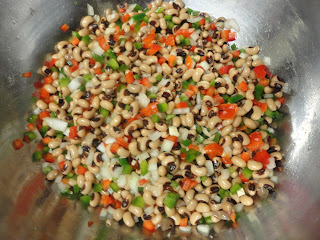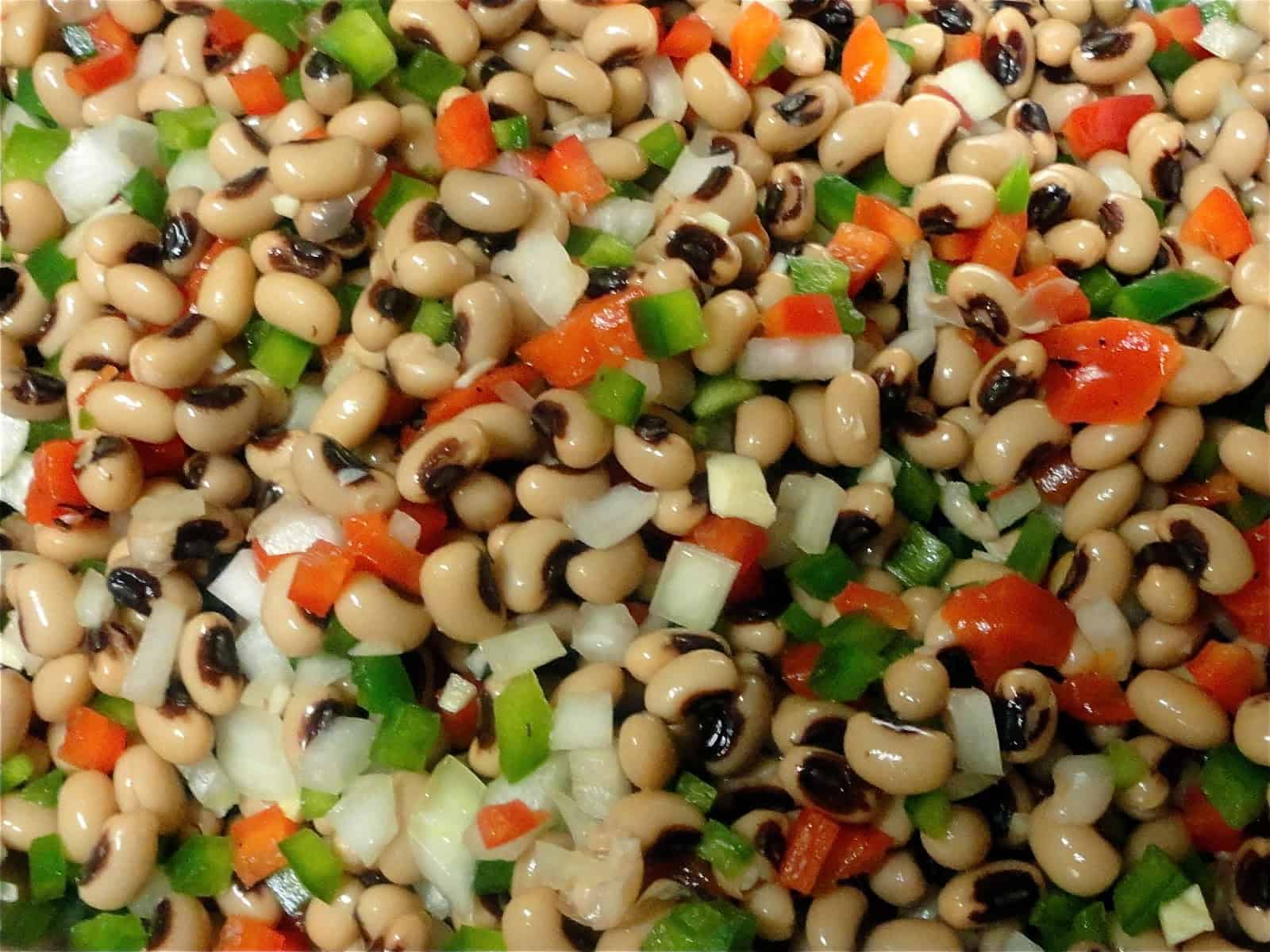Recipe for Mississippi Caviar from “Mastering the Art of Southern Cooking” courtesy of Nathalie Dupree and Cynthia Graubert.
3 (16 ounce) cans black-eyed peas, drained
1/2 cup finely chopped green pepper
1/2 cup finely chopped red pepper
3/4 cup finely chopped hot peppers
3/4 cup finely chopped onion
1/4 cup drained, chopped pimento
1 garlic cloves, chopped
1/3 cup red wine vinegar
2/3 cup olive oil
1 tablespoon Dijon mustard
Salt
Hot sauce
Pita or Tortilla chips
 Combine peas, bell peppers, hot peppers, onion, pimento and garlic.
Combine peas, bell peppers, hot peppers, onion, pimento and garlic. In a separate bowl, whisk together the vinegar, oil and mustard and pour over the bean mixture; mix well. Season to taste with salt and hot sauce.
With a wooden spoon or potato masher, mash the bean mixture slightly.
Refrigerate until ready to serve.
Drain the “caviar” well and serve with pita or tortilla chips.


As a true southern gal I have my "black-eyeds" ready to go along with cabbage and corn bread. Thanks for the recipe.
I wish you, Andrew, and all your loved ones a very happy and healthy New Year! I'm looking forward to more of your posts in 2013. Thanks for making 2012 so delicious!!
Best of the best,
Katie
Dear Katie, I thought of you when I was writing this post. Fascinating speculation as to the history of the black-eyed pea. And it comes to you with our very best wishes for all of 2013 from Monte and Andrew.